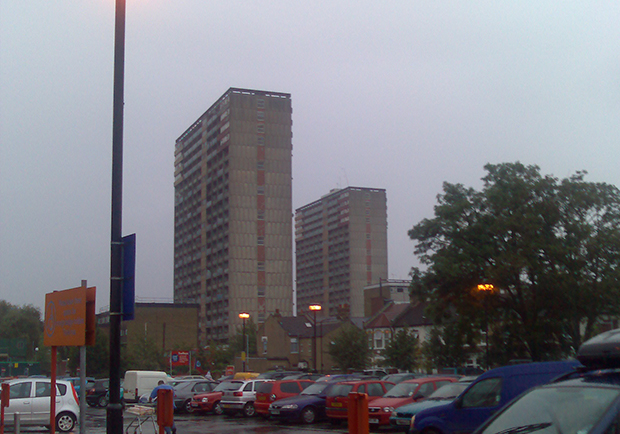
The Beaumont Estate in Leyton helped to transform the skyline of 1960s London. And for the first residents moving in, it represented the urban dream: affordable housing with stunning views and no outside toilets.
But by the beginning of this century that view had changed. Ugly, poorly-constructed and with a reputation for anti-social behaviour, high-rises fell out of favour, and many were demolished.
Among them were the Beaumont Estate towers, pulled down in 2006. This month a play at the Yard Theatre uses interviews with former and present residents of the estate to examine what our homes mean to us.
Re: Home is directed by Cressida Brown, and comes ten years after her original play about the Beaumont Estate. That play, Home, was set inside one of the condemned towers prior to its demolition, and used interviews with former residents to create an urban family drama.
“I had all these interviews so I just decided that as it’s 10 years to the month [since the demolition] that I’d revisit them. A lot of the people have moved, either into the new low-rises on the estate, or away completely. I thought I’d try to find the people I originally interviewed to see what had happened to them.”
What emerges is a complex picture: on one hand, enhanced security makes the estate feel safer; but on the flip side, she says, fewer people seem to know who their neighbours are.
“I interviewed one person who rather horribly was talking about the ‘civilising nature of architecture’ and that one of the reasons for tearing down the towers was that you could have these crack houses as hide outs in there, but now you don’t get everyone knowing one another and a sense of people looking out for you.”

Brown admits some anxiety about the idea of a “white middle class theatre-maker” parachuting into a community and making a play about the residents’ lives, and asks: “What right do I have?” It’s a question that makes its way into the play too.
“A lot of the play is actually turning the looking glass back on the process of making the theatre, so what’s the editing process and the responsibility of dealing with real people’s words,” Brown says.
“What we’ve done without trying to give it away is to throw the idea of being a witness or documenting other people’s lives back into the audience.”
For people of a certain generation, not having St Catherine’s Tower or St Paul’s Tower on the skyline must seem strange. But demolitions happened in many London boroughs, so why choose to focus on the Beaumont Estate in the first place, I ask.
“It’s a very notorious estate, it has lot of problems,” Brown replies. “And the towers had dominated the skyline and become almost an iconic space of the borough.”
“But the second reason was totally accidental. I was looking for an empty building to do a play in and a man at Waltham Forest Council suggested I interview all the people who lived in this building that was going to be demolished and make the play a celebration of their community.
“What’s weird about that is that using interviews has been the process for my theatre company ever since.”
Re: Home is at The Yard Theatre, Queen’s Yard, White Post Lane, E9 5EN from 9 February– 5 March
theyardtheatre.co.uk
